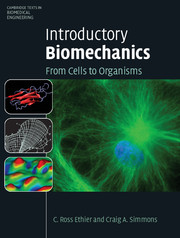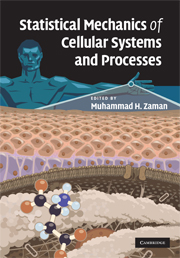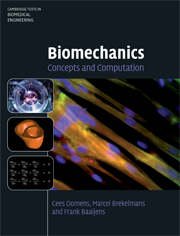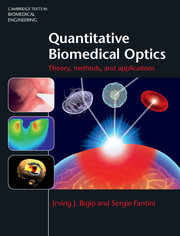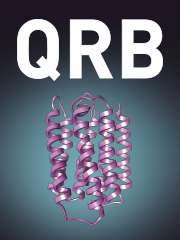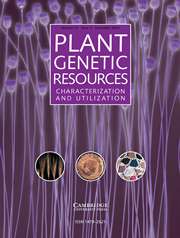Introductory Biomechanics
From Cells to Organisms
$121.00 USD
Part of Cambridge Texts in Biomedical Engineering
- Authors:
- C. Ross Ethier, University of Toronto
- Craig A. Simmons, University of Toronto
- Date Published: April 2007
- availability: This ISBN is for an eBook version which is distributed on our behalf by a third party.
- format: Adobe eBook Reader
- isbn: 9780511271175
Find out more about Cambridge eBooks
$
121.00 USD
Adobe eBook Reader
Other available formats:
Hardback
Looking for an inspection copy?
This title is not currently available on inspection
-
Introductory Biomechanics is a new, integrated text written specifically for engineering students. It provides a broad overview of this important branch of the rapidly growing field of bioengineering. A wide selection of topics is presented, ranging from the mechanics of single cells to the dynamics of human movement. No prior biological knowledge is assumed and in each chapter, the relevant anatomy and physiology are first described. The biological system is then analyzed from a mechanical viewpoint by reducing it to its essential elements, using the laws of mechanics and then tying mechanical insights back to biological function. This integrated approach provides students with a deeper understanding of both the mechanics and the biology than from qualitative study alone. The text is supported by a wealth of illustrations, tables and examples, a large selection of suitable problems and hundreds of current references, making it an essential textbook for any biomechanics course.
Read more- Truly introductory biomechanics text, presenting a wide range of topics from the mechanics of single cells to the dynamics of human movement: all material has been thoroughly class-tested
- Written specifically for engineers and others with a 'hard science' background, no prior knowledge of anatomy or physiology is assumed, with the necessary biological background presented in each chapter
- Richly illustrated with over 300 figures including some colour figures to ensure understanding of key points, over 40 tables to provide quick reference summaries of current reference data and over 120 problems
Reviews & endorsements
'Ethier and Simmons have crafted a masterful book … Based on a long-standing course taught to non-bioengineers, the presentation of material is clear and straightforward. Illustrations are of excellent quality and rich in content. This text will inspire many students of traditional engineering areas to think of biomechanics as a fertile discipline worthy of further pursuit.' James E. Moore, Jr, Texas A&M University
Customer reviews
17th Oct 2024 by UName-66784
Well suited to use for fourth year undergraduates and entering graduate students.
See all reviews17th Oct 2024 by UName-285648
Book content is very good. Covers almost all aspects to be known in the field to the instructors and students
Review was not posted due to profanity
×Product details
- Date Published: April 2007
- format: Adobe eBook Reader
- isbn: 9780511271175
- contains: 311 b/w illus. 8 colour illus.
- availability: This ISBN is for an eBook version which is distributed on our behalf by a third party.
Table of Contents
Preface
1. Introduction
2. Cellular biomechanics
3. Hemodynamics
4. The circulatory system
5. The interstitium
6. Ocular biomechanics
7. The respiratory system
8. Muscles and movement
9. Skeletal biomechanics
10. Terrestrial locomotion
Appendix A. The electrocardiogram
Index.-
Find resources associated with this title
Type Name Unlocked * Format Size Showing of
This title is supported by one or more locked resources. Access to locked resources is granted exclusively by Cambridge University Press to lecturers whose faculty status has been verified. To gain access to locked resources, lecturers should sign in to or register for a Cambridge user account.
Please use locked resources responsibly and exercise your professional discretion when choosing how you share these materials with your students. Other lecturers may wish to use locked resources for assessment purposes and their usefulness is undermined when the source files (for example, solution manuals or test banks) are shared online or via social networks.
Supplementary resources are subject to copyright. Lecturers are permitted to view, print or download these resources for use in their teaching, but may not change them or use them for commercial gain.
If you are having problems accessing these resources please contact [email protected].
Sorry, this resource is locked
Please register or sign in to request access. If you are having problems accessing these resources please email [email protected]
Register Sign in» Proceed
You are now leaving the Cambridge University Press website. Your eBook purchase and download will be completed by our partner www.ebooks.com. Please see the permission section of the www.ebooks.com catalogue page for details of the print & copy limits on our eBooks.
Continue ×Are you sure you want to delete your account?
This cannot be undone.
Thank you for your feedback which will help us improve our service.
If you requested a response, we will make sure to get back to you shortly.
×
